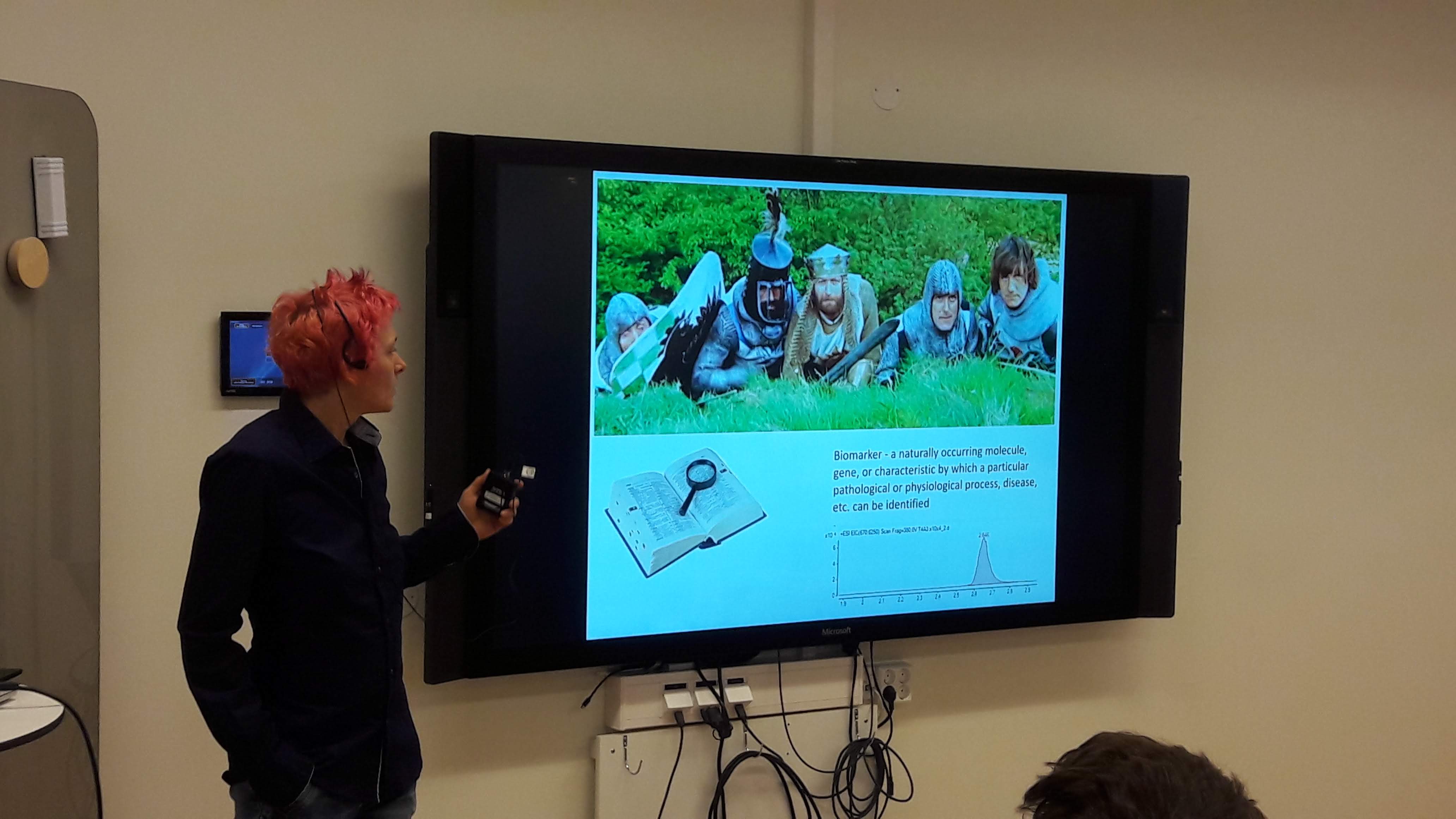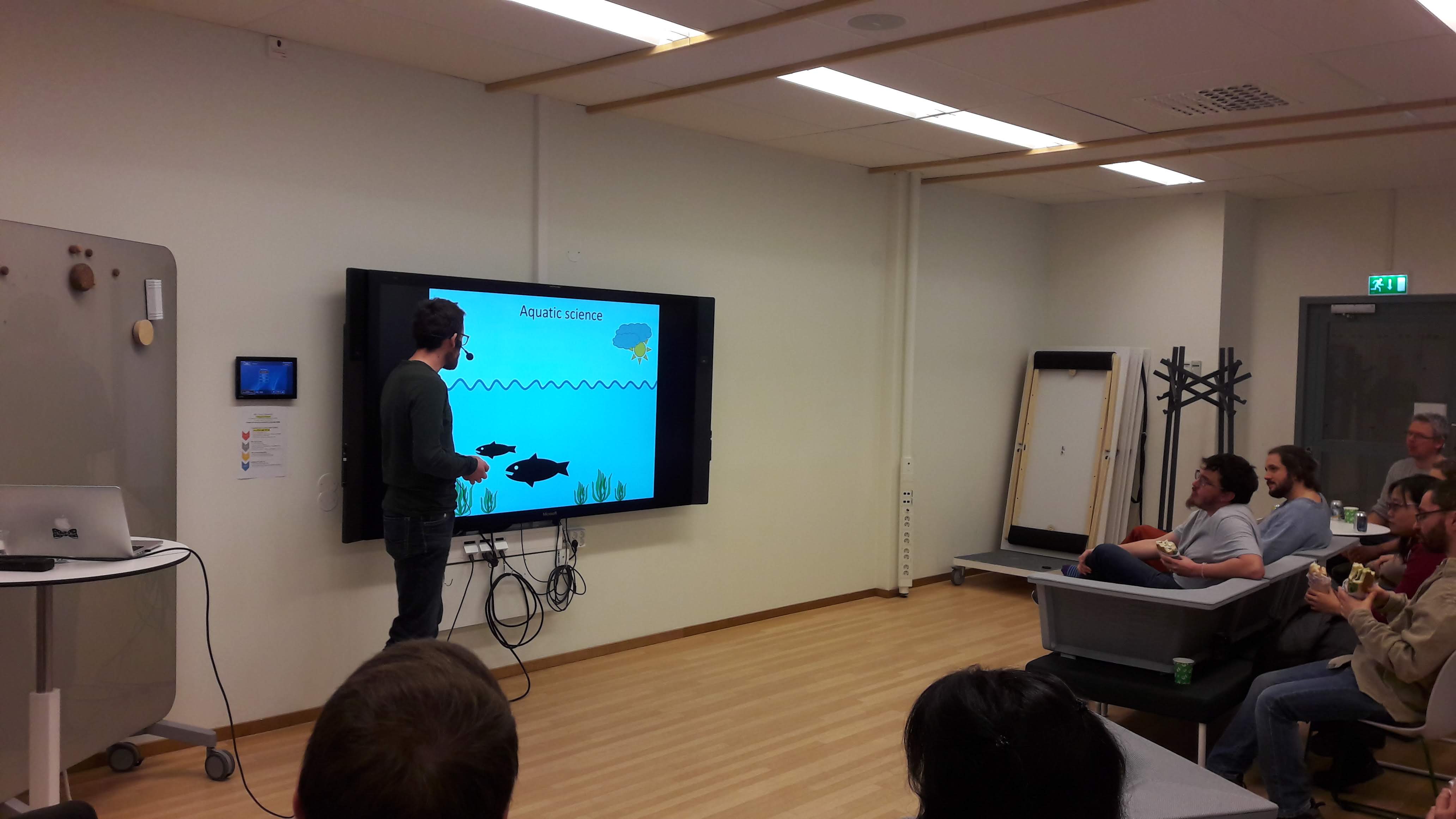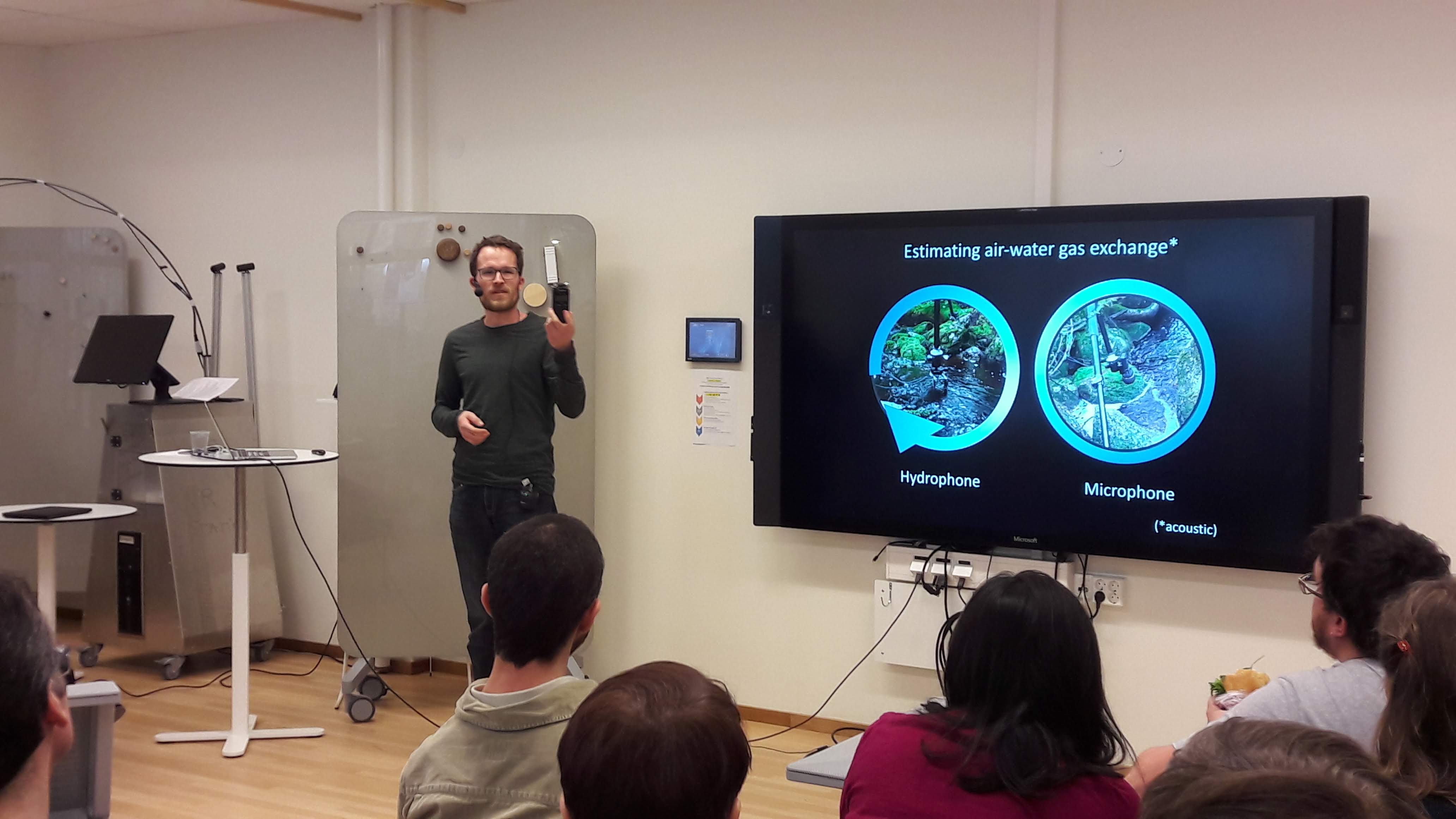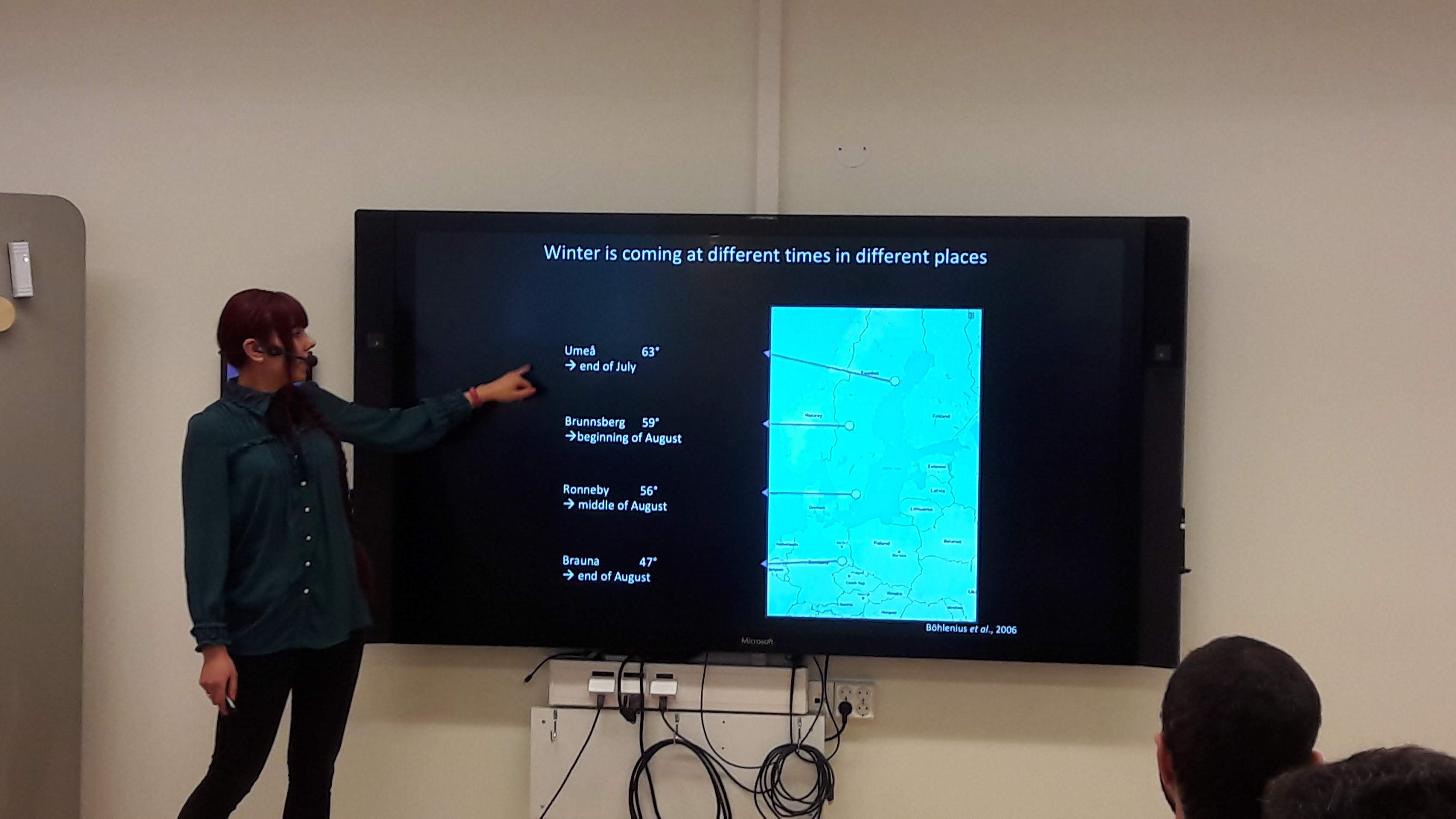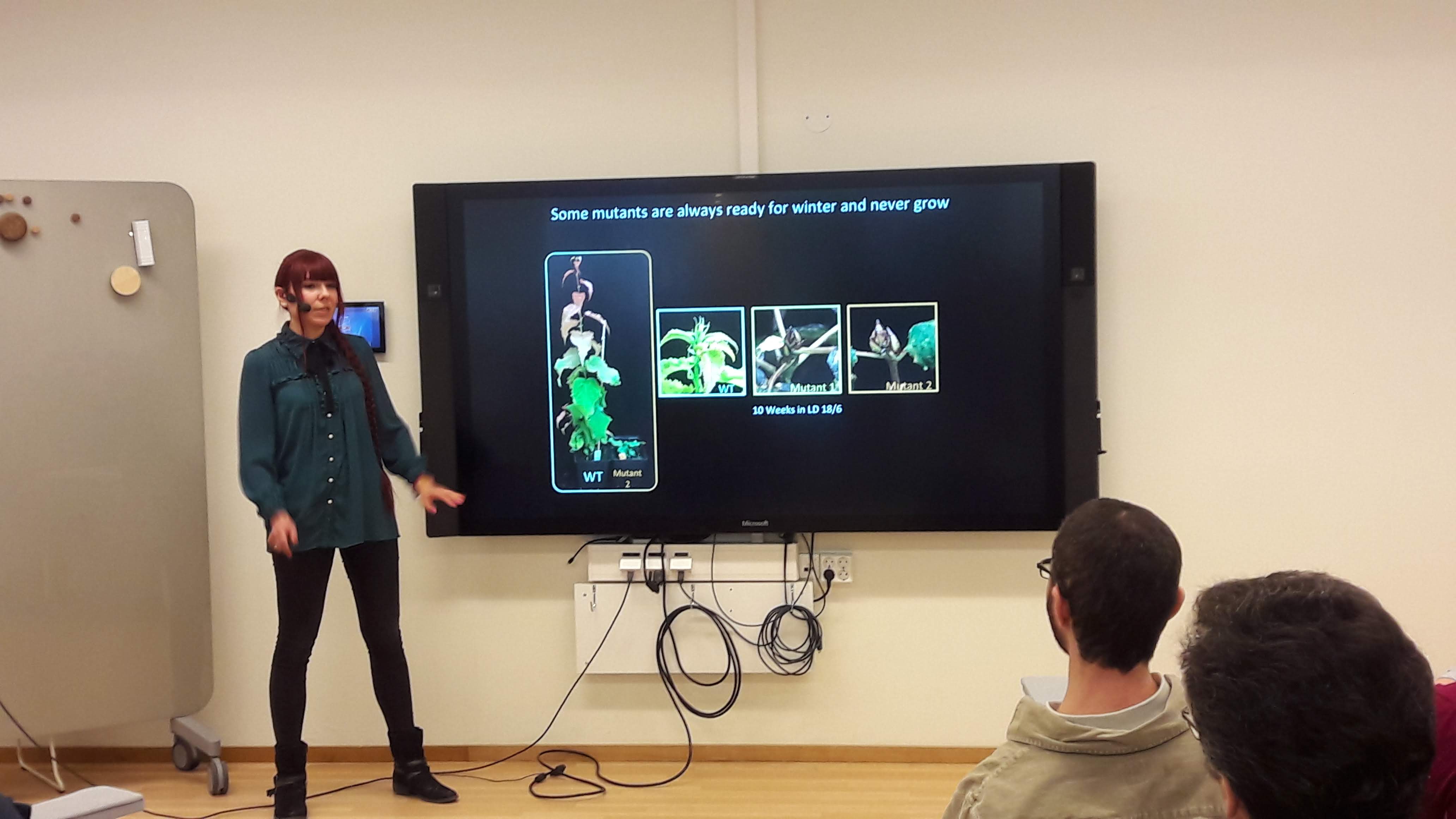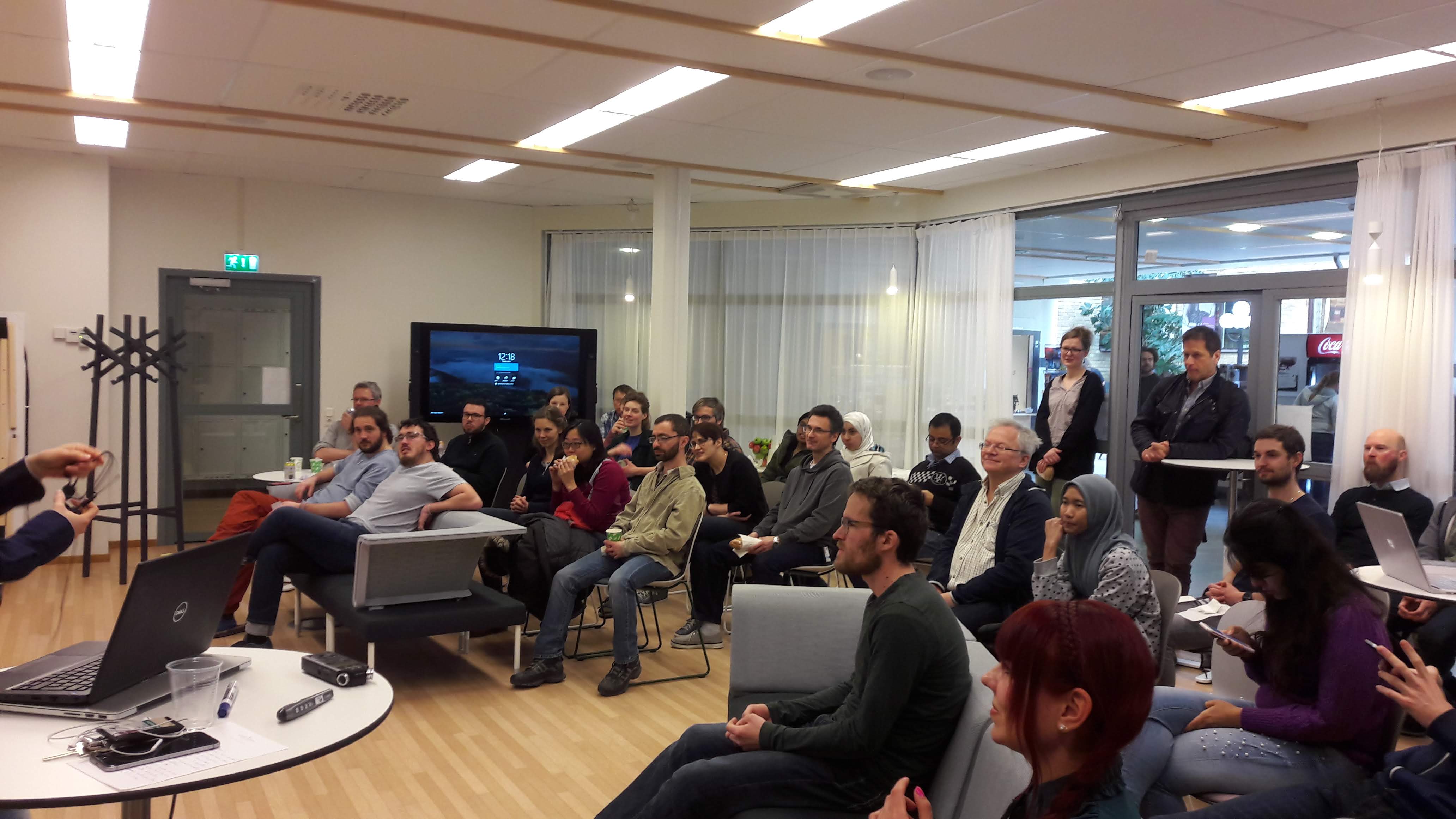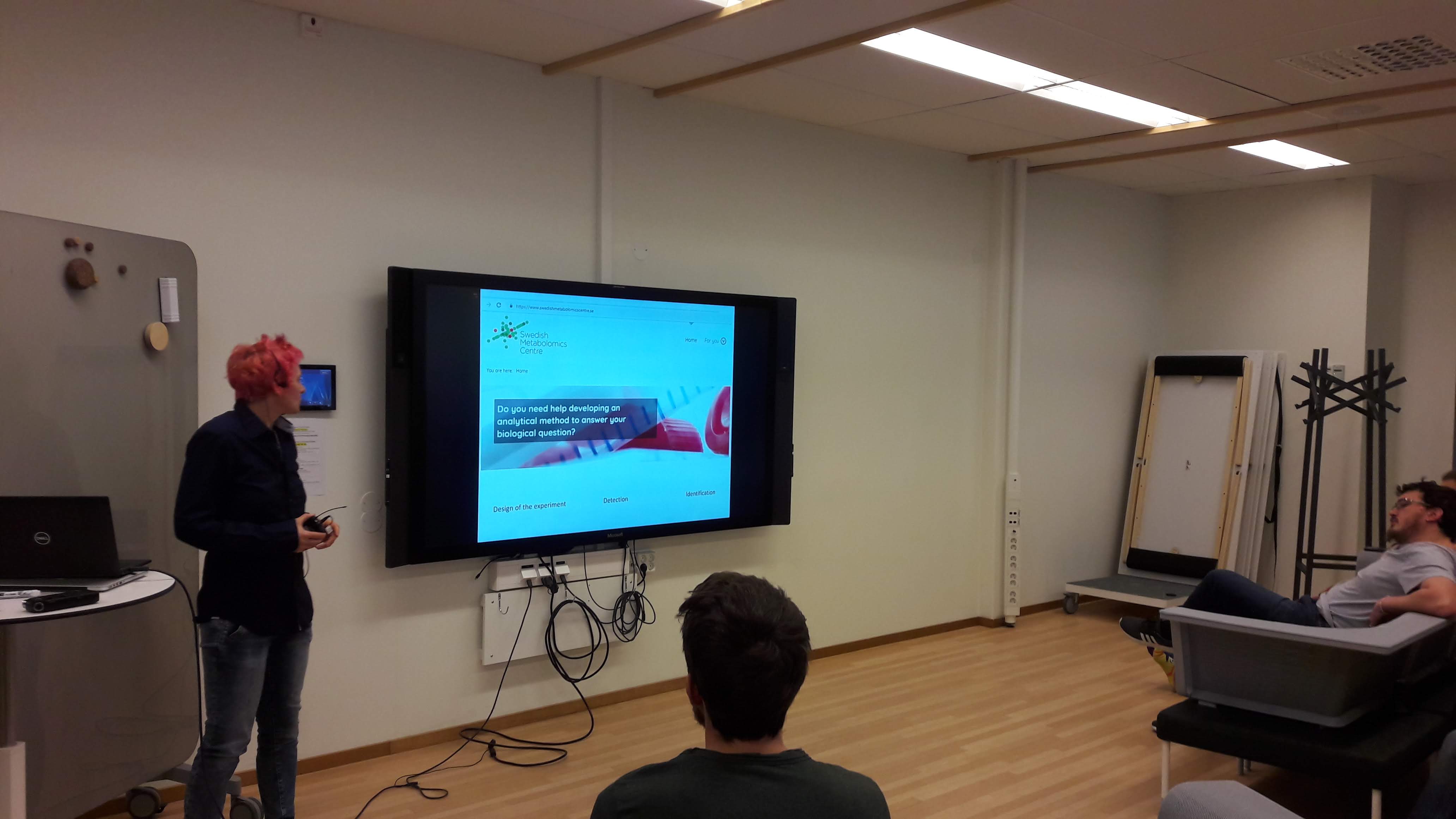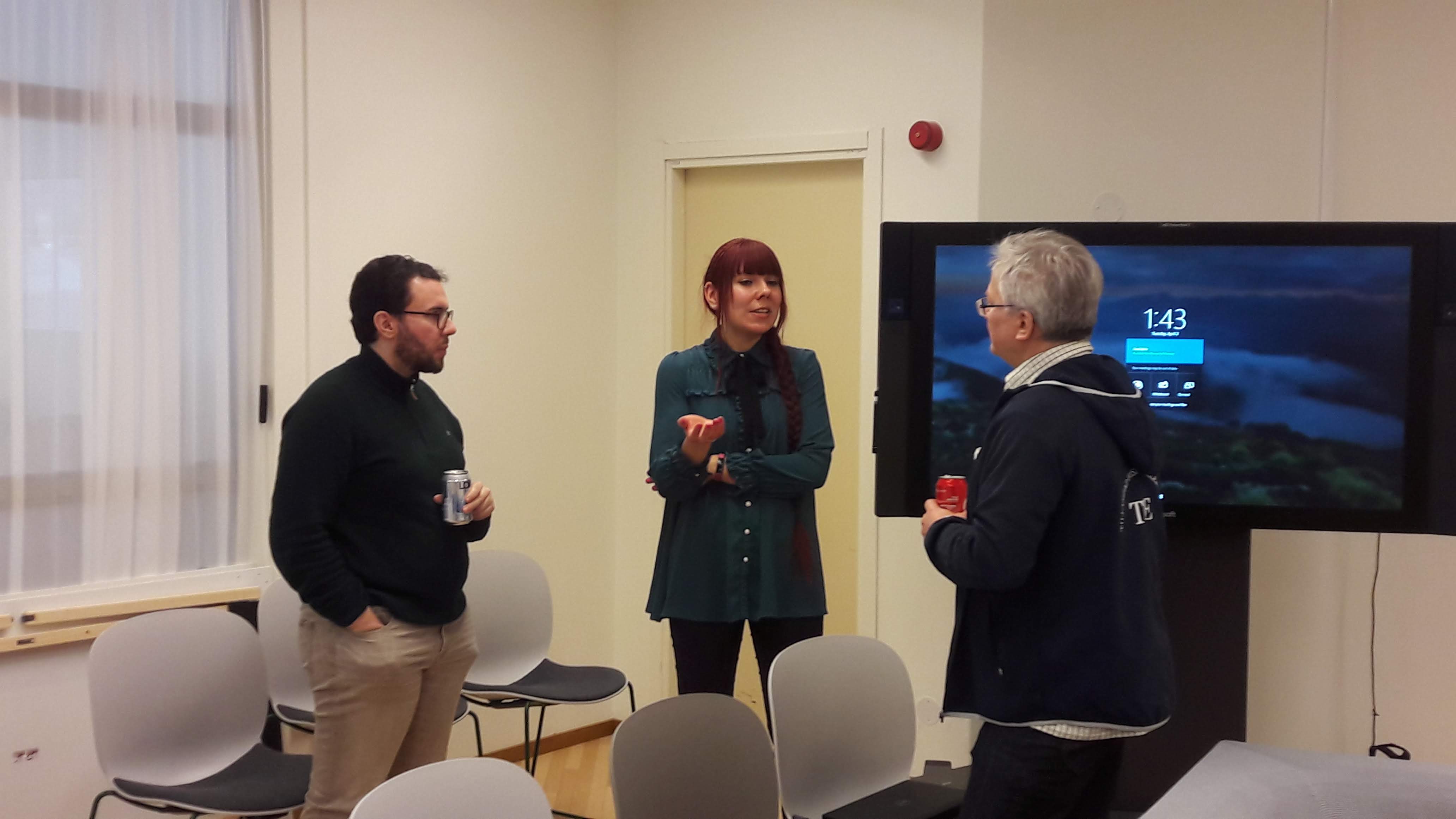Acoustics, Flowering time and Small molecules
April 2, 2019
First Pitcher: Marcus Klaus,Postdoctor at Department of Ecology and Environmental Sciences, Umeå University
Title: How acoustics can advance and communicate (aquatic) science
Most humans rely on their eyes more than on their ears – and so do most scientists. Yet, sound can be a unique source of scientific information and public curiosity. Here, I present a novel acoustic method designed to estimate air-water gas exchange rates (k) in streams and rivers. Gas exchange allows, for example, oxygen in to improve water quality and fish life, and greenhouse gases out which affects global warming. However, the magnitude and physical controls of k are poorly quantified, mainly because traditional methods to estimate k are very labor intense. With the new method, k can be estimated by spectral analysis of simple flow sound recordings by making use of the fact that both k and flow sound are controlled by the same processes: turbulence and air bubbles. The new method exemplifies the large potential of acoustics to improve our understanding and applications related to major sustainability challenges in aquatic ecology, and to communicate these to a broad audience.
Second Pitcher: Domenique André, PhD student at the Department of Forest Genetics and Plant Physiology, the Swedish University of Agricultural Sciences
Title: Winter is coming – but how does a tree know that?
Winter is coming – but how does a tree know that? Surprisingly enough the same way a flower knows when to bloom! We are working on two closely related genes that were originally discovered as major regulators of flowering time in annual plants. But by now we know that their functions exceed just that. It is very important for plants to do the right things at the right time and just like humans, plants have an internal clock that helps them keep track of time. This way they can predict the change of seasons and brace themselves.
Third Pitcher: Olena Rzhepishevska,Senior research engineer at the Department of Chemistry, affiliated as researcher at the Department of Clinical Microbiology, Umeå University
Title: A shadow of a biomarker – metabolomics for everybody
Small molecules can tell big secrets. Metabolites are small organic molecules that are a part of every living creature be that a human, a plant, or a bacterium. Depending on the conditions of life (nutrition, environmental factors, diseases or genetic mutations) the composition of metabolites in an organism can somewhat change and certain metabolites can be indicative of certain conditions. Such metabolites can be used as biomarkers. I will talk about metabolites – biomarkers of infectious diseases and how they can be used for diagnostic and treatment monitoring of these diseases. But keep in mind that metabolite analysis is an exciting method to study all possible living systems as well as their products.

